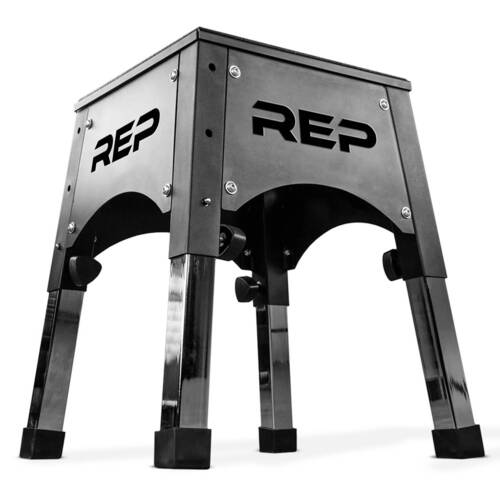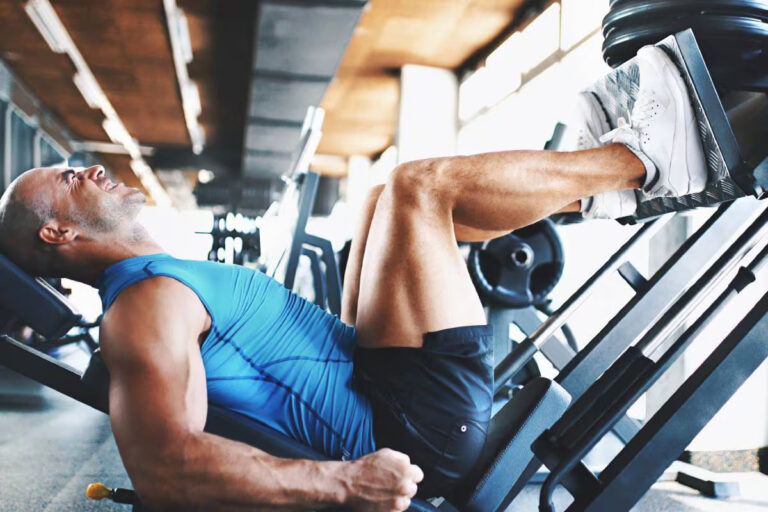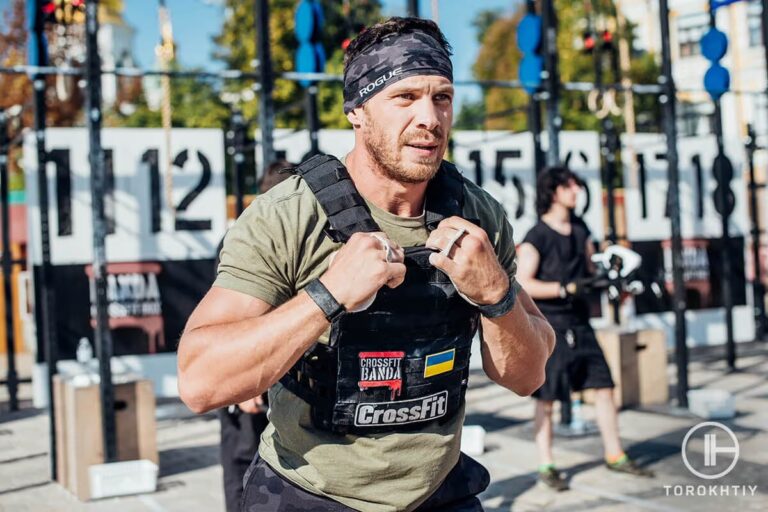12 Essential Plyo Box Exercises for Full-Body Workout
Plyo box exercises are an incredible way to increase your fitness and achieve remarkable results. Whether you’re aiming to enhance your explosive power, agility, or overall strength, incorporating plyo box exercises into your training routine can bring numerous advantages.
In this article, we will explore the benefits of plyo box workouts and provide you with a variety of exercises targeting different areas of your body. We’ll cover upper-body exercises, lower-body exercises, exercises for the back, and even full-body movements that engage multiple muscle groups simultaneously.
Which plyo box exercises are the best? Plyo box exercises are effective and funny. Cross-training plyo box workouts increase several aspects of fitness such as strength, speednes, and explosive power. Since those types of exercises are very intense, it does not take too much time to finish a training session.

Overview of plyometric training with plyo boxes
Plyo box exercises are a form of plyometric training that involves explosive movements performed on a robust box or platform. These types of exercises typically include jumps, hops, sprints, push ups, and other dynamic movements that engage multiple muscle groups simultaneously.
Plyo box exercises are gaining popularity for several reasons. Firstly, they are fun and they offer a challenging way to improve fitness and athletic performance. What makes plyo box exercises so appealing is their versatility and ability to engage multiple muscle groups simultaneously in a short period of time. They may train both the upper and the lower body, helping to improve strength, power, coordination, and balance.
Additionally, plyo box exercises provide a versatile training option. They can be easily adapted to various training levels by adjusting the height of the box or adding the extra weight. This makes them accessible to beginners as well as advanced individuals looking to push their limits.
6 Benefits of incorporating plyo box exercises into your fitness routine
There are several benefits of plyo box exercises. Incorporating this training into your routine, you can improve different aspects of your fitness.
✅ Power and Explosiveness
Plyo box exercises enhance power production by engaging fast-twitch muscle fibers and improving muscle recruitment patterns. The explosive movements performed during plyometric exercises are a boost for muscular force production and increase jump height and sprint speed.
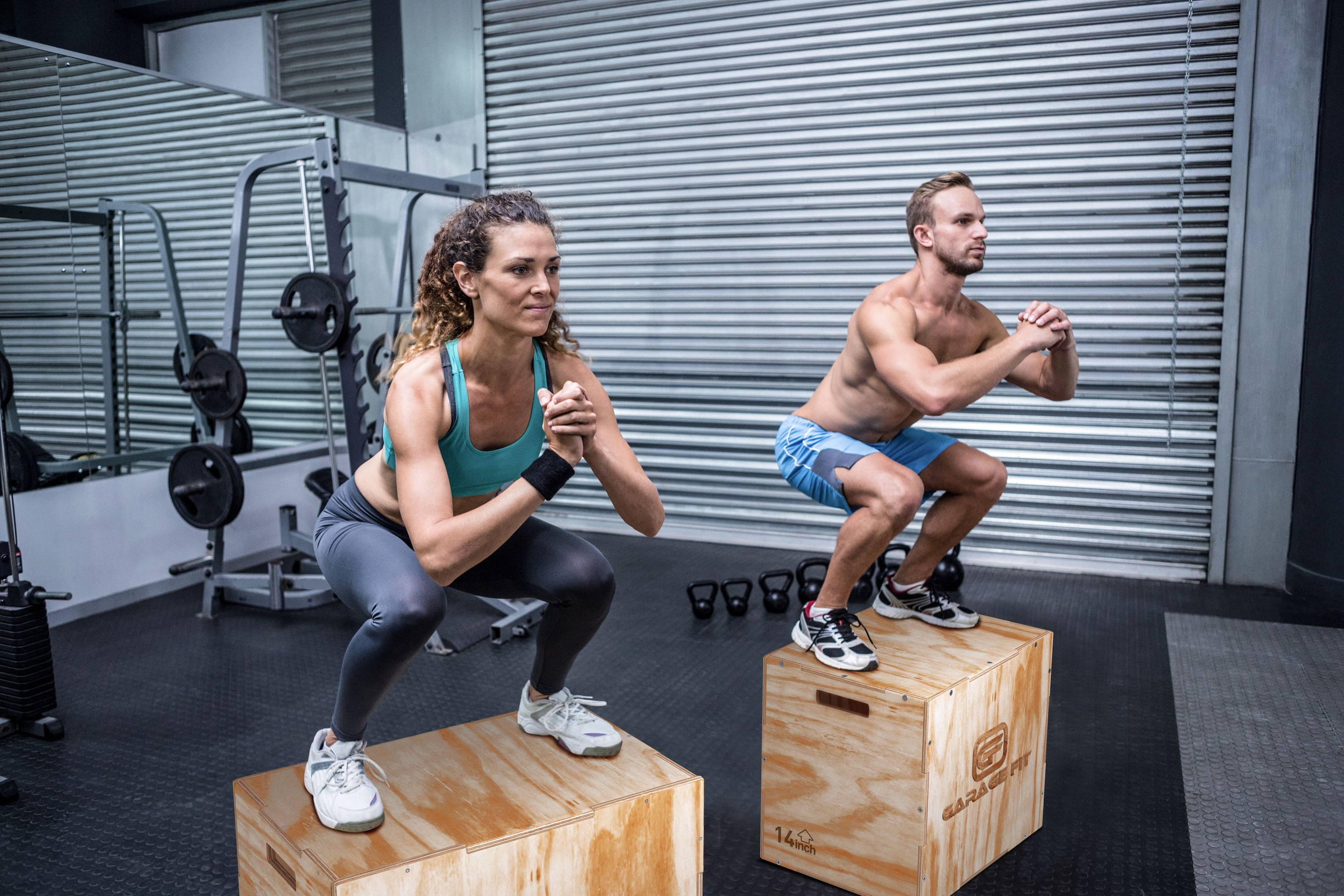
✅ Muscular Strength
Plyometric exercises require significant lower body and core strength, leading to improved muscular strength and endurance. The repeated eccentric and concentric contractions involved in these exercises stimulate muscle growth and promote strength development.
✅ Agility and Coordination
Dynamic movements are useful to improve agility and coordination by enhancing neuromuscular control and motor skills. The quick changes in direction required during these exercises improve overall body control and movement efficiency.
✅ Cardiovascular Fitness
Those exercises elevate heart rate and contribute to cardiovascular conditioning due to their high-intensity nature. Incorporating plyometric movements into circuit or interval training can provide an effective cardiovascular workout and aid in calorie burning.
✅ Bone Density
The impact forces generated during plyo exercises stimulate bone remodelling and help improve bone mineral density, reducing the risk of osteoporosis. The mechanical stress placed on the skeletal system promotes bone health and can have long-term benefits for overall bone strength.
✅ Functional Movement Benefits
Plyo box exercises replicate movements that mimic real-life activities, promoting functional fitness. These exercises improve the ability to perform daily tasks, sports-specific actions, and athletic manoeuvres by enhancing neuromuscular coordination and balance.
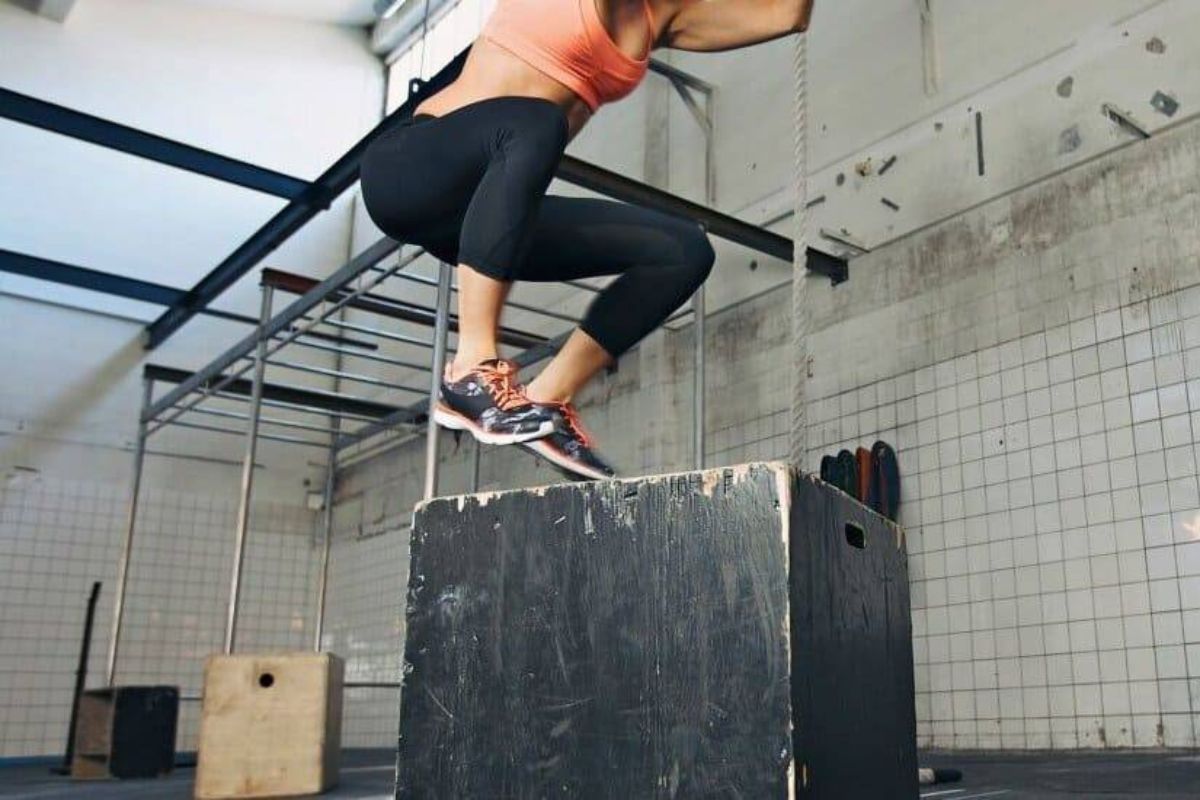
Plyo Box Exercises
Here are some examples of plyometric box exercises for the lower, upper, back and full body at three different levels of experience.
Plyo Box Exercises For Lower Body
Training the lower body with plyo box exercises offers several notable benefits. First, it enhances lower body strength and power, helping to improve performance in activities like running, jumping, and lifting. Second, it improves agility, balance, and coordination, which are essential for athletic movements and daily activities. Lastly, plyo box exercises stimulate calorie burning and cardiovascular fitness, contributing to weight management and overall health.
Below you can find some examples of plyometric exercises for the lower body at three different training levels.
1. Entry Level: Box Step-Ups
Start by standing in front of a plyo box with your feet hip-width apart. Step onto the box with one foot, pushing through your heel and extending your leg. Bring your other foot on the box, standing tall. Step back down with one foot at a time and repeat. This exercise helps improve lower body strength and stability.
2. Intermediate Level: Box Jumps
Stand in front of the plyo box with your feet shoulder-width apart. Bend your knees and jump onto the box, extending your hips and knees. Land softly on the box with both feet and step back down. This exercise improves power, explosiveness, and lower body coordination.
3. Expert Level: Depth Jumps
Stand on top of a plyo box. Step off the box, landing softly on the ground with both feet. As soon as you land, instantaneously jump vertically or horizontally, aiming for maximum height or distance. This exercise develops explosive power and reactive strength in the lower body.
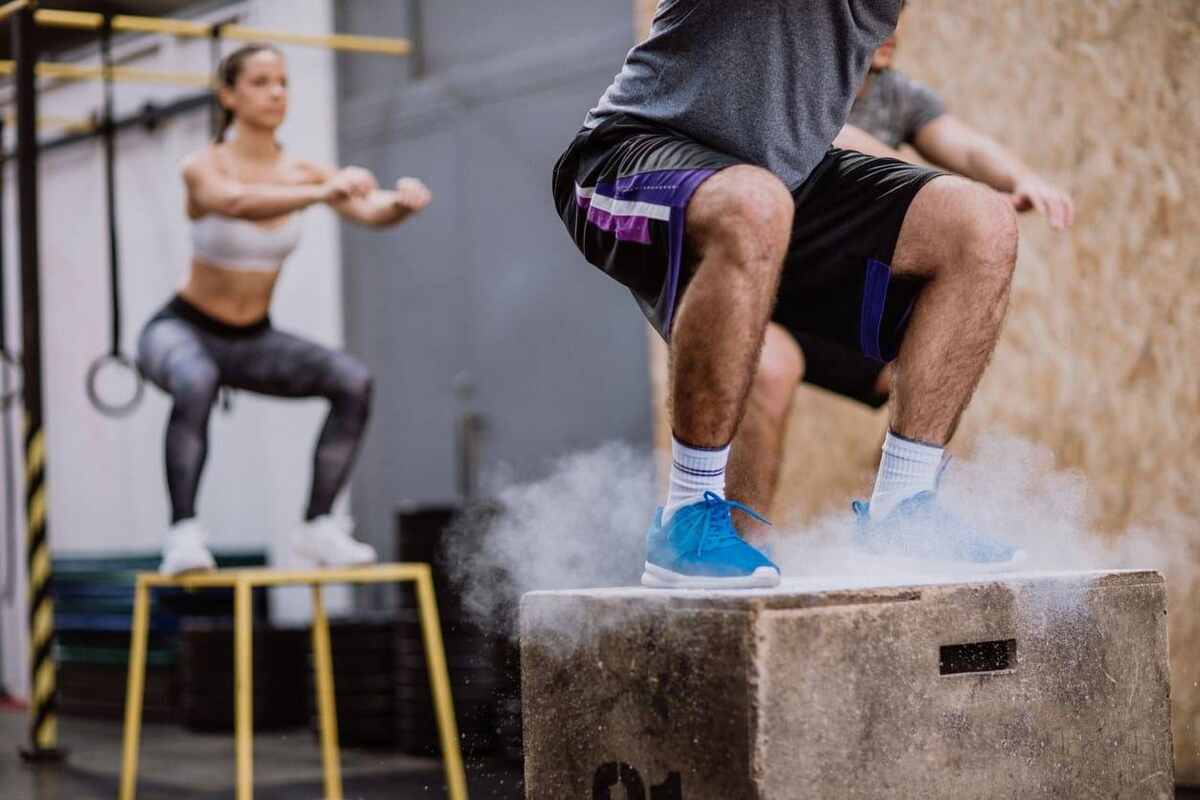
Plyo Box Exercises for Upper Body
Incorporating plyo box exercises into your upper body training routine offers several notable benefits. First, it enhances upper body strength, helping to develop stronger muscles in the chest, shoulders, and arms. This increased strength can improve performance in activities like push-ups, bench presses, and overhead movements. Second, plyo box exercises promote power and explosiveness in the upper body, which is crucial for athletic movements and activities that require quick bursts of strength. Lastly, these exercises engage the core muscles, contributing to improved stability and overall functional fitness.
Below you can find some examples of plyometric exercises for the upper body at three different training levels.
1. Entry Level: Box Push-Up
Place your hands shoulder-width apart on the plyo box and assume a push-up position with your body in a straight line. Drop your chest towards the box, then explosively push yourself back up to the starting position. This exercise improves upper body strength and stability.
2. Intermediate Level: Box Shoulder Taps
Start in a high plank position with your hands on the plyo box and your feet on the ground. Keeping your body in a straight line, lift one hand and tap the opposite shoulder, then return it to the box. Box shoulder taps challenge your upper body strength and stability while incorporating core engagement.
3. Expert Level: Plyo Box Handstand Push-Up
Start in a handstand position with your hands placed on the ground shoulder-width apart and your feet resting against the plyo box. Lower your body by bending your elbows, bringing your head towards the ground, and then explosively push yourself back up to the starting position. This advanced exercise targets the shoulders, triceps, and other upper body muscles.
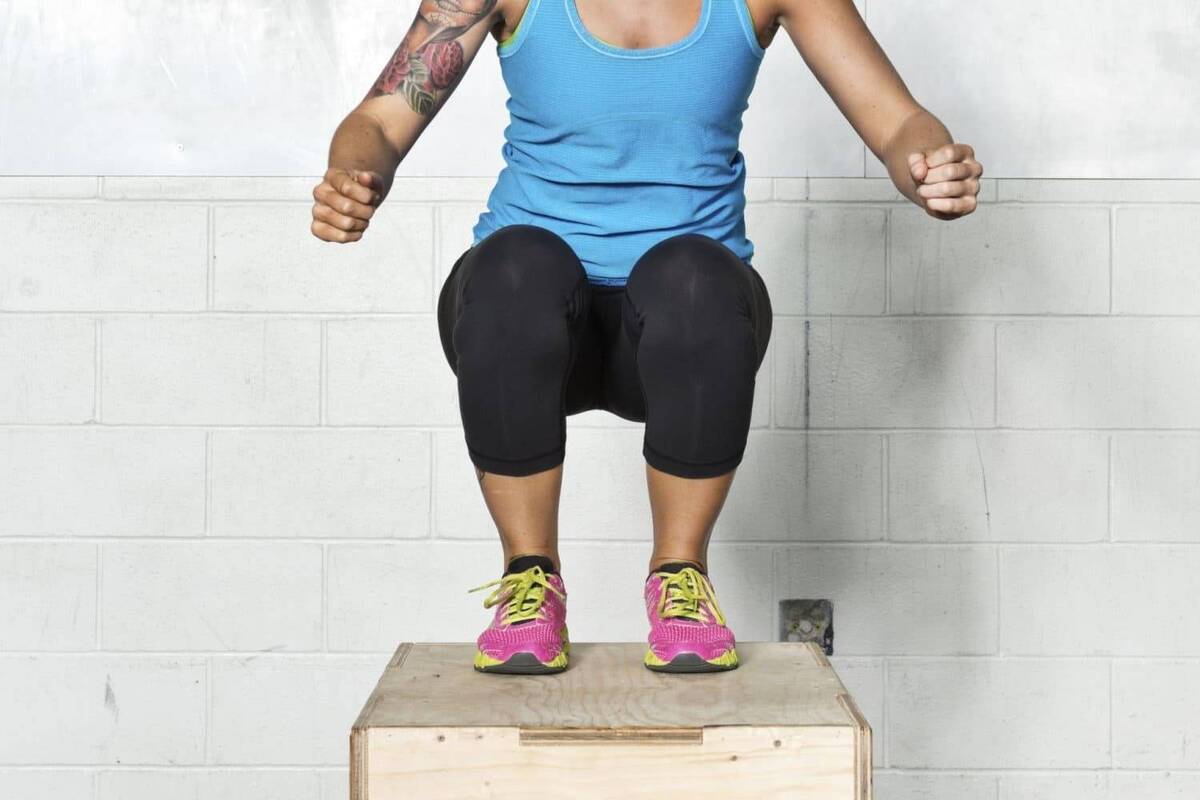
Plyo Box Exercises For The Back
Incorporating plyo box exercises into your back training routine offers several key benefits. First, it helps to strengthen and tone the muscles of the back, including the latissimus dorsi, rhomboids, and erector spinae. This improved strength can enhance posture, stability, and overall back health. Second, plyo box exercises engage the core muscles, which are essential for maintaining proper form and stability during back exercises. Lastly, these exercises promote power and explosiveness in the back muscles, which can enhance athletic performance and functional movements.
Below you can find some examples of plyometric exercises for the back at three different training levels.
1. Entry Level: Reverse Plank on the Box
Sit on the plyo box with your legs extended in front of you and hands resting on the box behind you, fingers pointing toward your feet. Lift your hips off the box, creating a straight line from head to heels. Hold for a few seconds, then lower back down.
2. Intermediate Level: Box Jumps to Reverse Plank
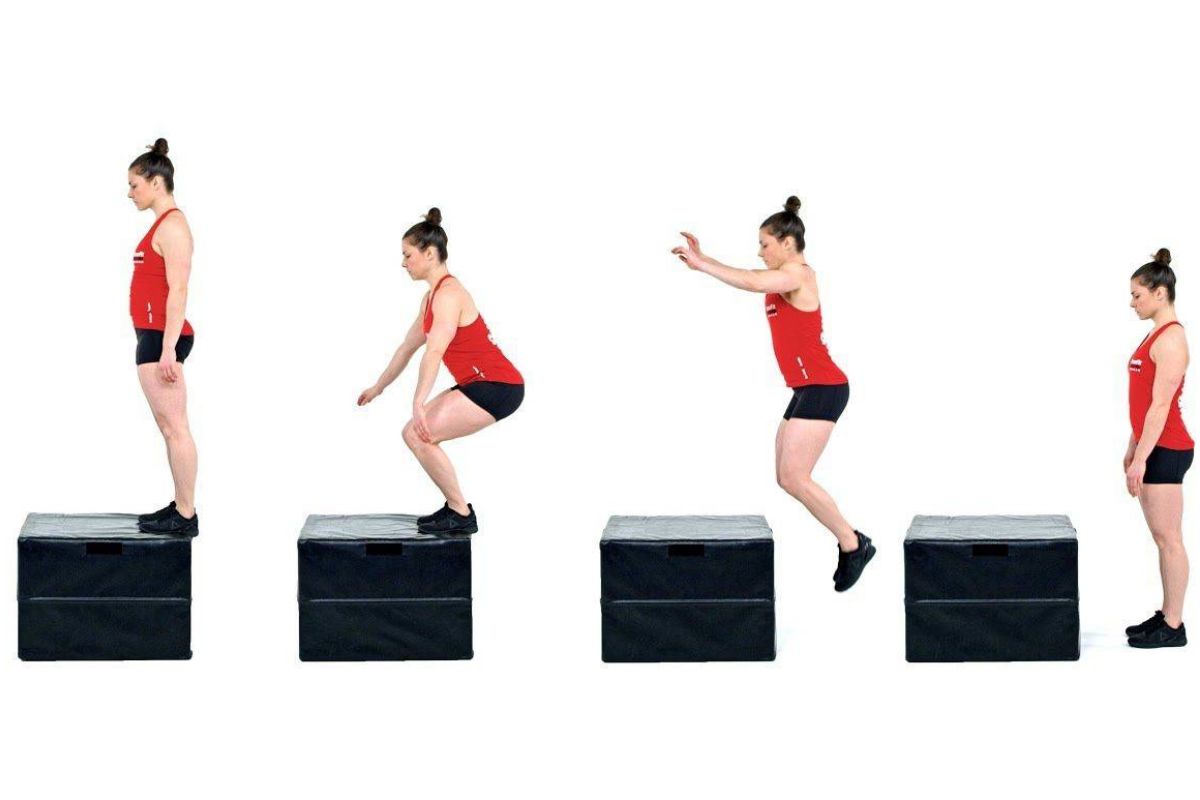
Start by standing in front of a plyo box. Perform a box jump onto the box, but instead of stepping down, kick your legs back and land in a reverse plank position with your hands resting on the box and your body extended. Hold the position briefly, engaging your back muscles, then return to the starting position and repeat. This exercise targets the posterior chain muscles, including the back, glutes, and hamstrings, while also improving core stability.
3. Expert Level: Plyo Box Single-Leg Romanian Deadlifts
Stand in front of the plyo box with one foot on the box and the other foot on the ground. Hinge forward from the hips, keeping your back straight, and lower your torso toward the ground while extending the lifted leg straight back. Return to the starting position by squeezing the glutes and engaging the back muscles.
Plyo Box Exercises for Full Body
Incorporating plyo box exercises into your full-body training regimen offers a range of benefits. Firstly, these exercises engage multiple muscle groups simultaneously, promoting efficient and effective workouts. This can lead to increased calorie burn and improved overall fitness. Secondly, plyo box exercises enhance explosive power, agility, and coordination, which are valuable attributes for various sports and physical activities. Lastly, they provide a dynamic and challenging workout that keeps your routine engaging and fun. By incorporating plyo box exercises into your full body training, you can achieve a well-rounded workout, improving strength, endurance, power, and athleticism.
Below you can find some examples of full body plyometric exercises at three different training levels.
1. Entry Level: Step-Ups With Shoulder Press
Begin by standing in front of a plyo box with a pair of dumbbells held at shoulder height. Step onto the box with your right foot, driving through your heel, and simultaneously press the dumbbells overhead. Step back down and repeat with your left foot. This exercise engages the lower body, particularly the quads, and glutes, while also targeting the shoulders and core.
2. Intermediate Level: Burpee Box Jumps
Start by standing in front of a plyo box. Perform a burpee by squatting down, placing your hands on the floor, kicking your legs back into a push-up position, and then quickly jump your feet back up towards your hands. From this position, explosively jump onto the plyo box, landing softly with both feet. Step or jump back down and repeat. This exercise combines cardiovascular conditioning, upper body strength, and lower body power.
3. Expert Level: Box Jump Burpees With Medicine Ball Slam
Begin by standing in front of a plyo box with a medicine ball held in both hands. Perform a burpee by squatting down, placing the medicine ball on the floor, kicking your legs back, and then quickly jump your feet back up towards your hands. From this position, explosively jump onto the plyo box while holding the medicine ball overhead. As you land on the box, immediately slam the medicine ball down onto the ground. Step or jump back down and repeat. This exercise challenges full-body explosive power, coordination, and core strength.
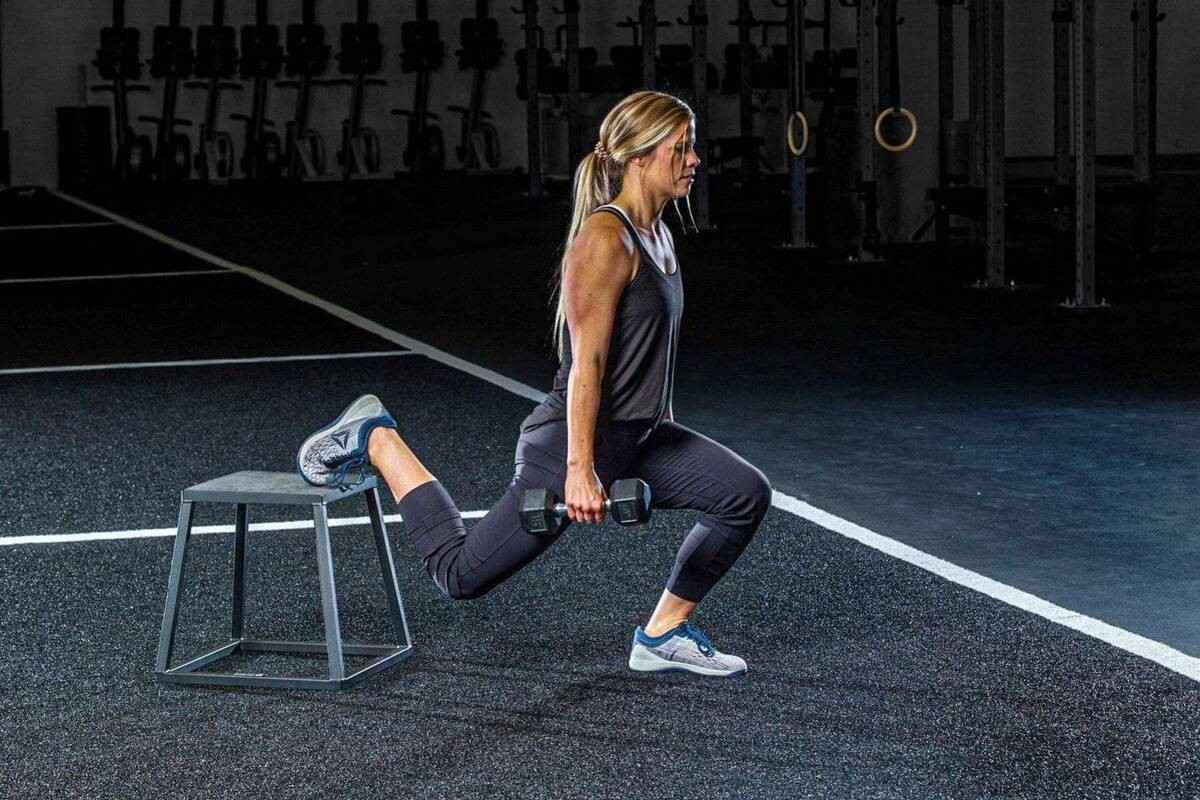
Plyo box workout examples
Here a 4-week plyometric box workout program combined with other exercises designed to increase power and explosiveness:
Workout 1:
- Box Jumps: 3 sets of 8 reps
- Box shoulder taps: 3 sets of 12 reps
- Step-Ups with Shoulder Press: 3 sets of 12 reps
Workout 2:
- Box Jump Burpees: 3 sets of 8 reps
- Plyo Push-Ups: 3 sets of 10 reps
- Bulgarian Split Squats: 3 sets of 12 reps per leg
Workout 3:
- Box Jump Burpees with Medicine Ball Slam: 3 sets of 6 reps
- Plyo Decline Push-Ups on Box: 3 sets of 8 reps
- Single-Leg Box Squats: 3 sets of 10 reps per leg
Workout 4:
- Box Jump Variations: 3 sets of 6 reps
- Clapping Push-Ups: 3 sets of 8 reps
- Depth Jumps: 3 sets of 10 reps
Workout 5:
- Depth Jumps with Medicine Ball Slam: 3 sets of 5 reps
- Plyo Push-Ups with Clap: 3 sets of 6 reps
- Depth Box Squats: 3 sets of 8 reps
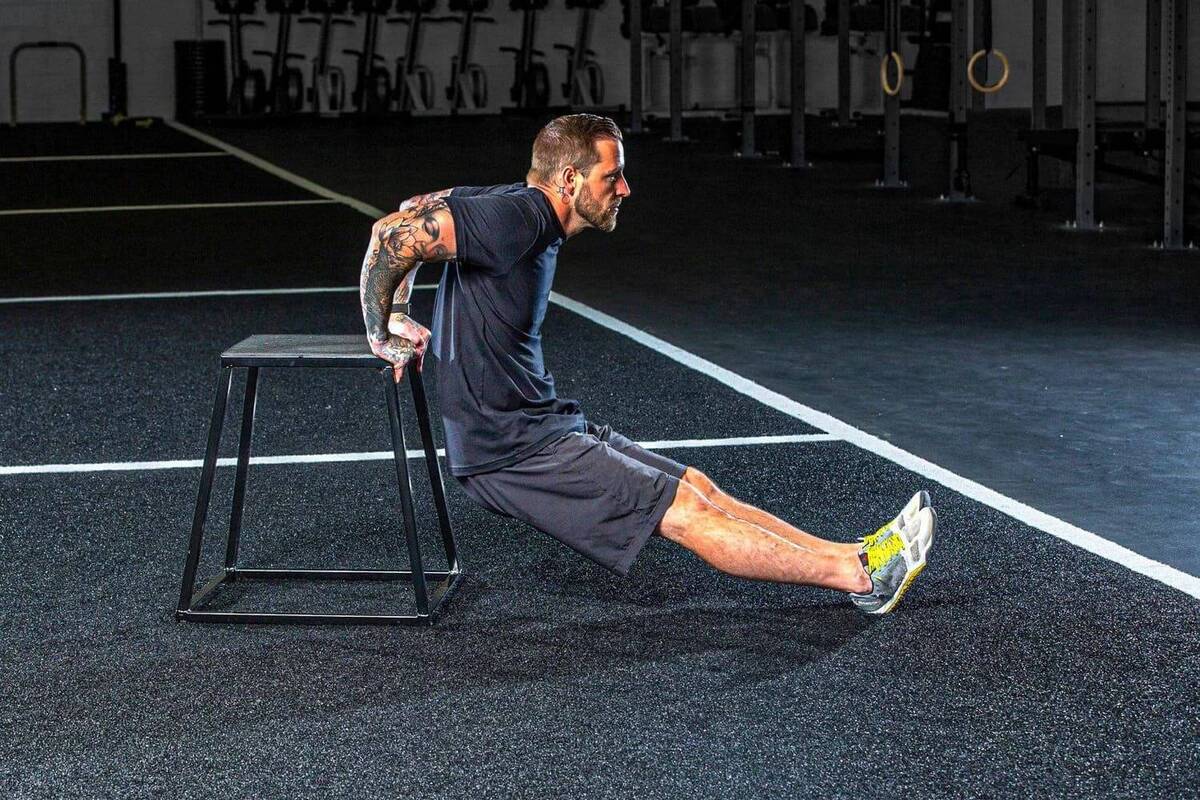
Choosing the right height and material for your fitness level
Before you decide to buy a plyo box, you should take into account these two crucial factors. if you ignore them, you may waste your money or couldn’t get maximum from your plyo box training.
1. The Right Material
Choosing the right material for a plyo box is crucial for safety and optimal performance. Look for sturdy and durable materials, ensuring stability during intense workouts. A good material could be steel, as it can bear different weights.
2. The Right Height
Consider your fitness level when selecting the appropriate height, starting with a lower height, and gradually progressing. The best way is to find a box where it is possible to regulate the height and it can follow as your training progresses.
Plyo Box we recommend
As mentioned, the plyo box height plays a crucial role to reach optimal results and safeness during the workout. However, it is difficult to find the right plyo box as everyone has his/her stature and fitness level.
The solution to this problem could be using an ADJUSTABLE PLYO BOX. This box, made of steel, is safe and has different height options (16,20 and 24) that you can switch, so it could be a useful tool that can help you in your training progress. The landing area is 16 x16 which guarantees excellent safety for those who train.
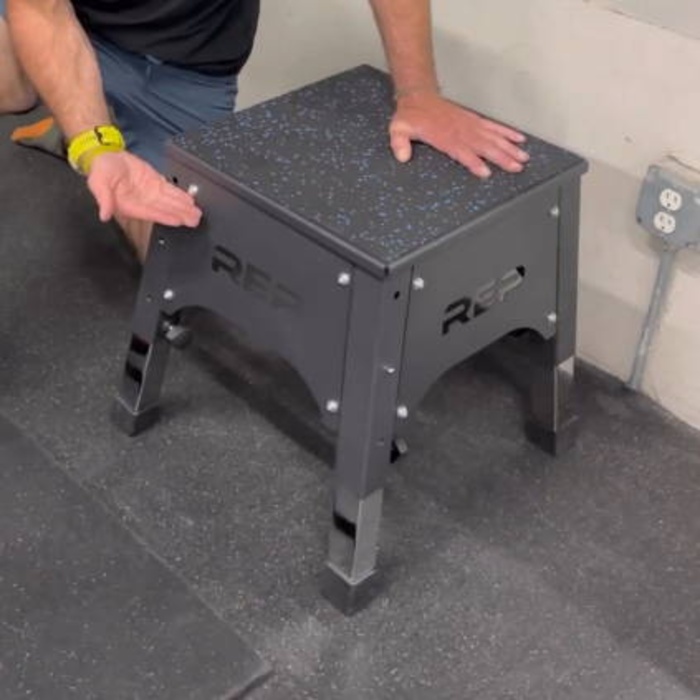
Even though the box is made from firm material, it is lightweight, easy to move and it doesn’t take up much space in the house.
FAQ
Does Plyo Build Muscle?
The answer is yes, plyometric exercises are useful to build muscles by training fast-twitch muscle fibers and enhancing muscular power and explosiveness. These exercises create a high-intensity stimulus, leading to muscle recruitment and adaptation. Incorporating plyometrics into your training routine can contribute to muscle development and overall athletic performance.
Are Box Jumps Better Than Squats?
Both box jumps and squats offer unique benefits and play important roles in a complete training program. Squats primarily build strength and muscle mass. Box jumps, on the other hand, focus more on explosive power. Both exercises have their place and can complement each other for overall athletic development. None of them is better or worse, they offer different types of training.
Conclusion
Plyometric box exercises are effective and dynamic training that may enhance your power, explosiveness, and overall athletic performance. Whether you’re a beginner or an experienced athlete, incorporating these exercises into your routine can lead to significant benefits. Remember to start with a proper plyo box exercise routine and progress gradually. If you have any questions or want to share your thoughts and experiences, please don’t hesitate to ask in the comment section below. Your feedback is valuable to us!
Also read:
- Balance Board Workout
- Sandbag Exercises
- Ghd Sit up Benefits
- Best Parallettes for Calisthenics
- Best Plyo Boxes
- Best Roman Chairs
- Push Up Bar Workout
- Best Balance Board Reviews
- Best Resistance Bands
- Best Functional Trainer Machine
References:
- The Youth Physical Development Model // National Strength and Conditioning Association: https://journals.lww.com/nsca-scj/fulltext/2012/06000/the_youth_physical_development_model__a_new.8.aspx
- Plyometric and Speed Training // ResearchGate: https://www.researchgate.net/profile/David-Potach/publication/322040348
- Does plyometric training improve vertical jump height? // BMJ Journals: https://bjsm.bmj.com/content/41/6/349.short
- Effects of Plyometric and Sprint Training // National Strength and Conditioning Association: https://journals.lww.com/nsca-jscr/fulltext/2015/07000/Effects_of_Plyometric_and_Sprint_Training_on.17.aspx
- Does plyometric training improve strength performance? // ScienceDirect: https://www.sciencedirect.com/science/article/abs/pii/S144024400900187X
- Effects of Plyometric Training // National Strength and Conditioning Association: https://journals.lww.com/nsca-jscr/Fulltext/2012/02000/The_Effects_of_Plyometric_Training_on_Sprint.35.aspx
- Plyometric training // Journal of Sports: https://www.journalofsports.com/pdf/2018/vol3issue1/PartW/3-1-291-800.pdf
- Plyometric exercise and bone health in children // Springler Link: https://link.springer.com/article/10.1007/s12519-016-0076-0
- Chest- and Waist-Deep Aquatic Plyometric Training // ScholarWorks: https://scholarworks.bgsu.edu/ijare/vol1/iss2/6/
Why Trust Us?
With over 20 years in Olympic Weightlifting, our team does its best to provide the audience with ultimate support and meet the needs and requirements of advanced athletes and professional lifters, as well as people who strive to open new opportunities and develop their physical capabilities with us.
By trusting the recommendations of our certified experts in coaching, nutrition, dietology, and sports training programming, as well as scientific consultants, and physiotherapists, we provide you with thorough, well-considered, and scientifically proven content. All the information given in the articles concerning workout programming, separate exercises, and athletic performance, in general, is based on verified data. We ensure that you can rely on our professionals’ pieces of advice and recommendations that can be treated as personalized ones which will benefit you and fully meet your needs.
The product testing process is described in more detail here
Author: Ihor Shymechko
Pro Olympic Weightlifter, Coach
Best Results: Snatch – 208 kg,
C&J – 240 kg
Ihor has been a professional weightlifter since 1996, boasting over two decades of competition experience. His notable achievements include clinching the European Championship in 2009 and securing a silver medal in the 105kg division at the Senior World Championships in 2011. Ihor represented his country in the 2008, 2012, and 2016 Summer Olympics. After retiring from competitive weightlifting, he transitioned to coaching, leveraging his vast experience to guide athletes who now compete on both national and international stages.

